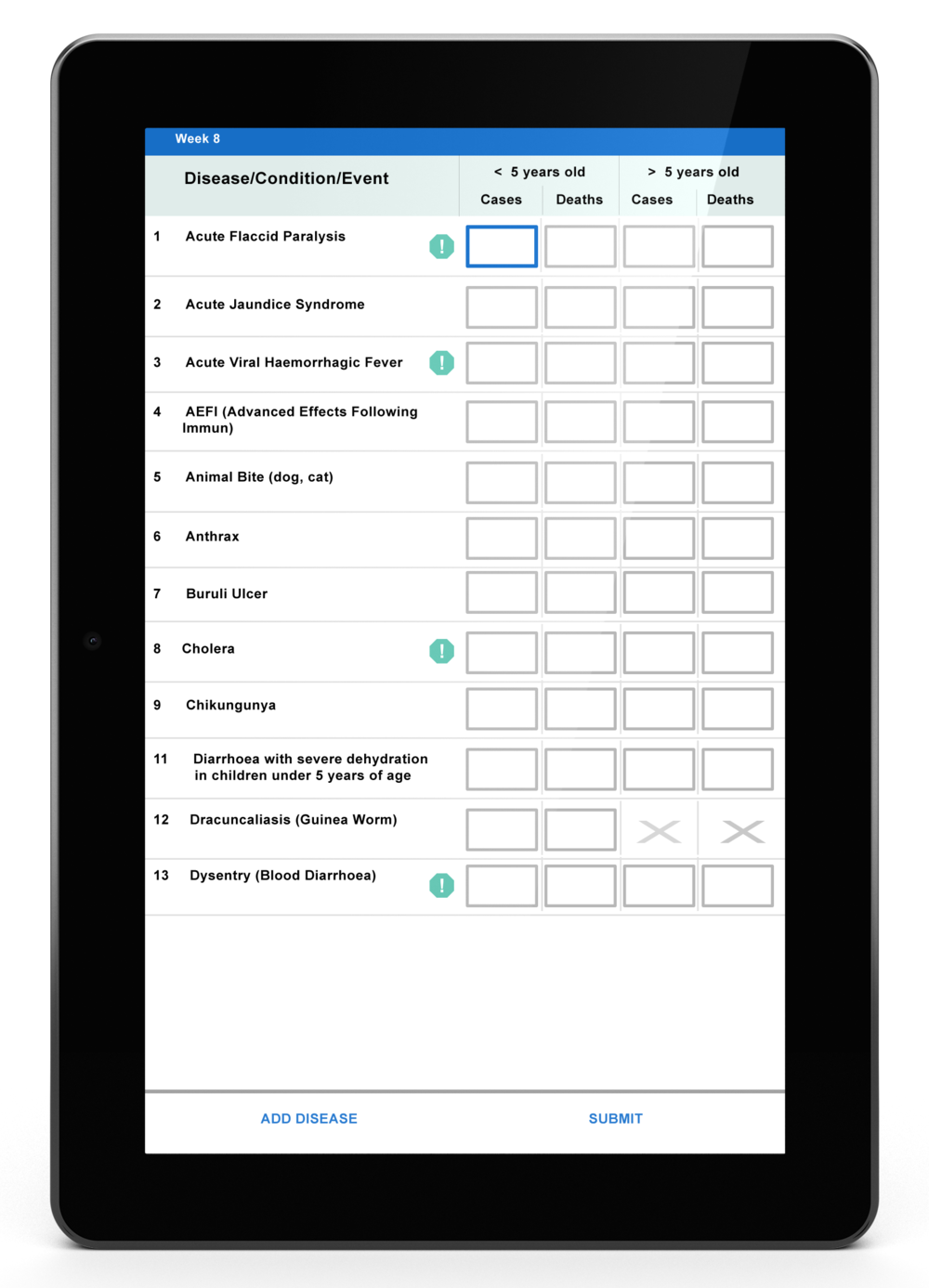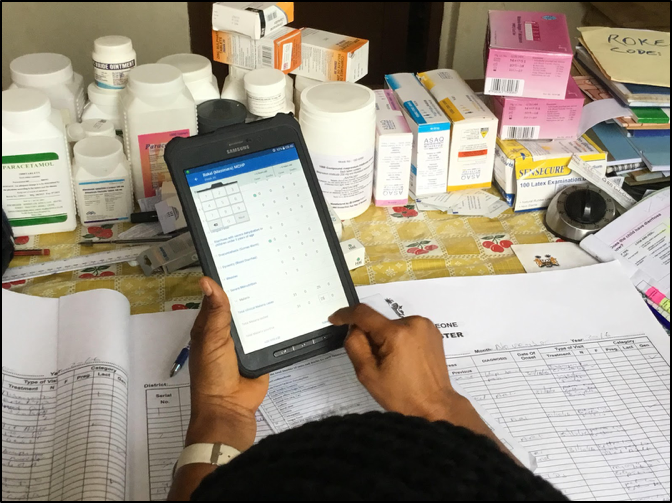Electronic Integrated Disease Surveillance and Response (eIDSR)
By Daniel Ojabo & Hawa Kombian
Sierra Leone’s Ministry of Health and Sanitation (MoHS) is collaborating with eHealth Africa (eHA), the Center for Disease Control and Prevention (CDC), World Health Organization (WHO), and additional partners to strengthen surveillance for all priority reportable diseases and improve preparedness for potential public health emergencies.

To reduce the frequency of the errors, which are prevalent in paper-based reporting and during the process of transferring data from one platform to another, eHA developed a mobile electronic Integrated Disease Surveillance and Response (eIDSR) application. This eIDSR app enables the entire health system to accurately record and share community-level health information from the district level to the national level.
Sierra Leone’s disease surveillance and reporting has improved drastically as a result of this new process. According to a recent CDC article, weekly disease reporting improved from occurring in 35% of health facilities, to occurring in 96% of all Sierra Leonean health facilities. This new disease reporting system has also cut the number of data entry errors in half, and verifies data 60% faster than the previous paper-based reporting system.
At the recent eIDSR National Rollout Review event in the Port Loko district (a district in the Northern Province of Sierra Leone), health facility workers and representatives from eHA, CDC, and WHO convened to assess the extent to which the rollout objectives had been achieved thus far. While speaking at the event, eHA’s Executive Director Evelyn Castle expressed her delight and emphasized that the system would be closely linked to Sierra Leone’s Front Line Field Epidemiology Training Program (FETP).
“We have been working with the Ministry of Health and WHO for the last few months on implementing a new electronic way to submit disease surveillance information. Instead of only submitting information from the district level, we are looking at collecting information from the health facility level ”
Collecting data at the health facility level would ensure that community-level health issues are captured. It also increases the accuracy of population wide health information. Thus, this approach better supports the district's’ ability to understand the needs of the multiple communities located within their district. When the information is ultimately provided to the national level, this allows for a more accurate, detailed, and timely assessment of disease prevalence nationwide. This information can then be used to make near real-time decisions about any potential disease outbreak.

Healthcare workers can now use the eIDSR app to submit weekly case reports of the standard 44 WHO priority diseases, conditions, and public health threats - including cases of diseases such as malaria and cholera. The eIDSR app is operational at all District Health Management Teams (DHMTs) across the country. It is currently being piloted in six (6) community health facilities within the Port Loko district to ensure that granular area level data is as accurate as possible before being consolidated at the DHMT level, through to the national level.
For the pilot, data was entered into mobile devices (i.e. tablets and smartphones) at the community health facility and sent to the DHMT before final transmission to the national level at the MoHS. This data is stored within DHIS2 (District Health Information System 2), a web-based open-source information system. DHIS2 is housed in the MoHS server and is managed by the MoHS Directorate of Policy, Planning Information. The DHIS2 is a tool for collection, validation, analysis, and presentation of aggregate statistical data, tailored to integrate health information management activities. The DHIS2 analytics and reporting functions utilize a dashboard interface to develop graphic and comprehensive insights into the state of public health across Sierra Leone.
eHA remains committed to achieving its mission by improving preparedness for potential public health emergencies across underserved communities in West Africa. To find out more about the work that eHA does, kindly subscribe to our monthly e-newsletter here.
